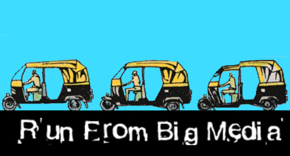Mom, you've taught me so many things that magically seem to make themselves useful in scenarios I could never had imagined. But more than anything, I love how you would explain the rationale behind something while teaching me about it. FYI, that has set me up for a lifetime of annoyance with people who refuse to use their brain.
Take for example, using the humble pressure cooker. I still remember how my mom taught me - our cook-masi was trying to tech me how to cook with a pressure cooker; how to open it, how to close it, the subtle nuances of how many whistles are too many whistles, etc. when she over-rode her and told me "this is pressure vessel, its job is to build up steam and increase the pressure so that the things inside boil faster and cook faster. So once the steam is built up, if you keep the flame on high all the time, you're basically wasting energy. Only chickpeas and kidney beans take more than 10 mins to cook" That was all the wisdom I've ever needed. Years later, in Physics class I learnt that a liquid's boiling temperature is a function of its vapor pressure; but my mom had beat Clausius and Clapeyron here.
So the next time you're cooking with a pressure cooker, try this: keep the flame high till you hear a steady low hum issuing from the safety valve (or what we call the whistle). At this point turn the heat down while ensuring that the "hum" is steady and set a timer to "Hum" time. Promptly turn off the flame when the time is up and allow the steam to escape. If you're too impatient, you can plunge the whole thing under a running tap in the sink. Below are proportions and tips that I've gleaned from my mom and experience, that heartless bit*h:
Now that I've told you this, go experiment. Do it. Also go make this bowl full of awesomeness. It was a part of this fantabulus meal I mentioned here.
 |
| Image Source: yachtpals.com |
So the next time you're cooking with a pressure cooker, try this: keep the flame high till you hear a steady low hum issuing from the safety valve (or what we call the whistle). At this point turn the heat down while ensuring that the "hum" is steady and set a timer to "Hum" time. Promptly turn off the flame when the time is up and allow the steam to escape. If you're too impatient, you can plunge the whole thing under a running tap in the sink. Below are proportions and tips that I've gleaned from my mom and experience, that heartless bit*h:
To
Cook
|
Water
Proportion
|
“Hum”
Time
|
Remarks
|
Soaked Rice, Daals,
Khichdi, Pulao, etc.
|
2 cups of water for
every cup
|
10 min
|
The daals will come
out very thick and creamy. They can be diluted to one’s taste
|
Un-soaked Rice,
Daals, Khichdi, Pulao, etc.
|
2+ cups of water for
every cup
|
10 - 12 min
|
This is not an exact
science. Remember you’re still in a kitchen
|
Broken Wheat / Cracked
Wheat / Porridge / Dalia
|
2.5 cups of water for
every cup
|
10 min
|
You’ll have to use
your discretion here. If the grain size is kinda small, go for 2 cups instead
of 2.5.
|
Soaked whole legumes
like green gram (मूंग), Bengal gram (चना), etc.
|
2.5 cups of water for
every “dry” cup
|
10 min
|
This is for people
who like bite in their food and don’t want to eat boiled mush.
|
Un-soaked whole legumes
like green gram (मूंग), Bengal gram (चना), etc.
|
3 cups of water for
every cup
|
15 min
|
|
Soaked chickpeas, kidney beans, etc.
|
3 cups of water for
every “dry” cup
|
25 min
|
These things tend to
expand a lot on soaking – don’t mess this up.
|
Un-soaked chickpeas, kidney beans, etc.
|
4 cups of water for
every cup
|
45 min
|
Now that I've told you this, go experiment. Do it. Also go make this bowl full of awesomeness. It was a part of this fantabulus meal I mentioned here.


